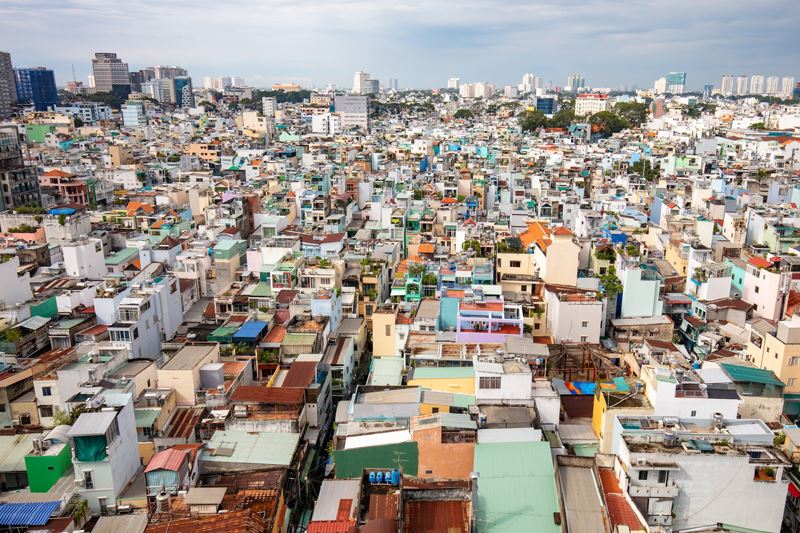The final battle between Diệm’s VNA and the Bình Xuyên began on April 28 at mid-day.[1] After initial small-arms fire and mortar exchanges, the VNA resorted to the heaviest artillery in its arsenal. This coincided with growing calls from within the Eisenhower administration to oust Diệm because Eisenhower believed that he was unable to subdue the Bình Xuyên and unify the country. By evening, a large part of the inner city was engulfed in house-to-house combat. By the morning of April 28, the fighting had driven thousands of civilians onto the streets. A square mile of the city, around the densely populated inner-city Chinese district of Chợ Lớn where the Bình Xuyên had a stronghold, became a free-fire zone. Artillery and mortars leveled the poor districts of the city, killing five hundred civilians and leaving twenty thousand homeless. Observers described that fighting from both sides as lacking strategy and relying on brute-force attrition tactics. One of the few maneuvers that was considered tactical was an attempt by the VNA to cut off Bình Xuyên reinforcements by demolishing the bridge across the Saigon–Chợ Lớn canal. This was made moot when the Bình Xuyên threw pontoon bridges across the canal. It appeared that the conflict would be determined by the side which was able to absorb the greater number of losses. Approximately 300 combatants were killed in the first day of fighting.
On the morning of April 28 in Washington, John Foster Dulles, the US Secretary of State phoned J. Lawton Collins to suspend moves aimed at replacing Diệm. Eisenhower had determined that these were to be put on hold pending the outcome of the VNA operation. Collins and Dulles clashed in the National Security Council meeting, with Collins vehemently calling for Diệm to be removed. Collins continued to argue that the attempt to destroy the Bình Xuyên by force would produce a civil war. The NSC endorsed Dulles’ position.
After 48 hours of combat, the VNA began to gain the upper hand. Le Grand Monde, previously Bảy Viễn’s largest gambling establishment, and temporarily serving as a Bình Xuyên citadel, was overrun by Diệm’s paratroopers after a struggle which caused heavy losses on both sides. The VNA then stormed one of the Bình Xuyên’s most heavily fortified strongholds, the Petrus Ký High School in Chợ Lớn. By the time Collins had arrived back in South Vietnam on May 2, the battle was almost won. The Bình Xuyên forces were broken and in retreat and their command posts were levelled. Bảy Viễn’s headquarters was battered and his tigers, pythons and crocodiles inside had been killed by mortar attacks and shelling.







